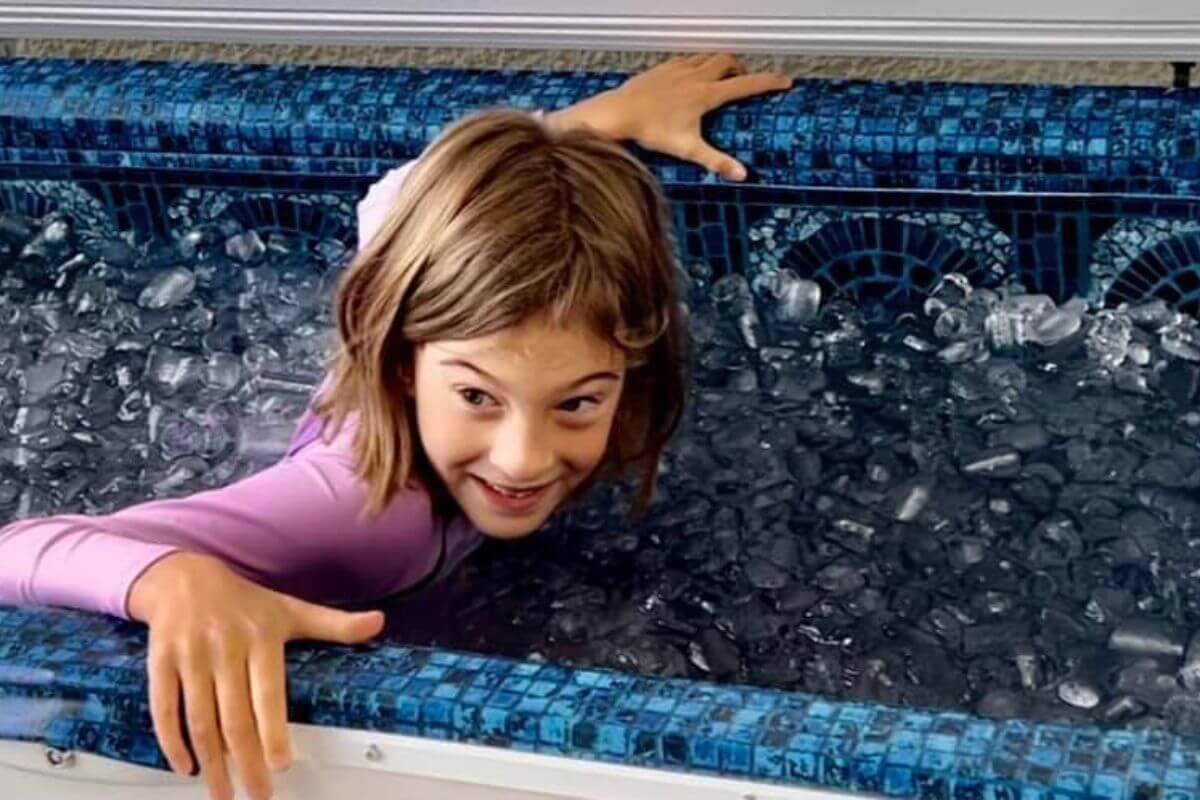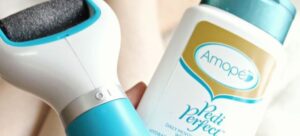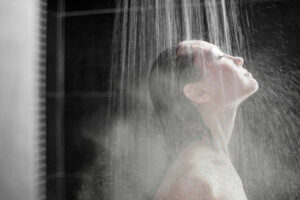Ice baths, also known as cold water immersion or cold therapy, have gained popularity in the realm of sports and recovery. Athletes, in particular, use them to reduce muscle soreness and inflammation. But what about children? Can a 10-year-old take an ice bath safely, and are there any potential benefits? In this comprehensive guide, we’ll explore the safety considerations, potential benefits, and guidelines for allowing a 10-year-old to take an ice bath.
Safety Considerations
Before considering an ice bath for a 10-year-old, it’s crucial to understand the safety aspects involved:
1. Parental Supervision:
Ice baths for children should always be administered under the supervision of a responsible adult, preferably a parent or guardian. Close supervision ensures that the child’s well-being is prioritized.
2. Duration and Temperature:
The temperature and duration of the ice bath should be carefully controlled. The water temperature should be around 50-59°F (10-15°C), and the bath should last no longer than 5-10 minutes. Extreme cold exposure can be harmful.
3. Individual Tolerance:
Every child is unique, and their tolerance for cold may vary. It’s essential to pay close attention to the child’s comfort and well-being during the ice bath. If they exhibit signs of discomfort, it should be terminated immediately.
4. Pre-existing Conditions:
Children with pre-existing medical conditions, such as heart problems or Raynaud’s disease, should not undergo ice baths without medical supervision and approval.
Potential Benefits
While the scientific evidence on the benefits of ice baths for children is limited, some potential advantages may apply:
1. Muscle Recovery:
Similar to athletes, children involved in sports or physical activities may experience muscle soreness. An ice bath could help reduce muscle inflammation and aid in recovery.
2. Cooling Down:
After intense physical activities on hot days, an ice bath can help children cool down rapidly and prevent overheating. It can be particularly useful for young athletes in warm weather conditions.
3. Improved Circulation:
Brief exposure to cold water may stimulate blood circulation and promote overall well-being. It can also provide a sense of refreshment.
Guidelines for Ice Baths for Children
If you decide to allow a 10-year-old to take an ice bath, follow these guidelines for safety and effectiveness:
Supervision:
A responsible adult should be present to supervise the child throughout the ice bath.
Temperature Control:
Ensure the water temperature is within the range of 50-59°F (10-15°C). Monitor the temperature using a thermometer.
Duration:
Limit the ice bath duration to 5-10 minutes. Do not exceed this time frame.
Comfort:
Pay close attention to the child’s comfort and well-being during the ice bath. If they express discomfort or shivering, end the bath immediately.
Warm-Up:
Allow the child to warm up and dry off thoroughly after the ice bath. Dress them in warm clothing to prevent chilling.
Consistency:
If you plan to use ice baths regularly, maintain a consistent routine to allow the child’s body to adapt gradually.
Consult a Healthcare Professional:
If the child has any underlying medical conditions, consult a healthcare professional before introducing ice baths.

Conclusion
Ice baths for children, including 10-year-olds, can be safe and potentially beneficial when administered with caution and under proper supervision. They can aid in muscle recovery, cooling down after physical activities, and promoting circulation. However, individual tolerance and pre-existing medical conditions should be taken into account. Always prioritize the safety and well-being of the child, and consult a healthcare professional if you have any concerns or questions.
Alternatives to Ice Baths for Children
Ice baths may not be suitable for all children, and there are alternative methods for achieving similar benefits without the extreme cold exposure. Here are some alternatives to ice baths for children:
1. Contrast Baths:
Contrast baths involve alternating between hot and cold water, typically in the form of foot or hand baths. This method can help improve circulation and reduce muscle soreness without subjecting the child to the intense cold of an ice bath.
2. Cool Compresses:
Applying cool compresses to specific areas of the body, such as the legs or arms, can help reduce muscle soreness and provide relief after physical activities.
3. Epsom Salt Baths:
Epsom salt baths in lukewarm water can promote relaxation and alleviate muscle tension. This is a more comfortable option for children and provides similar benefits to ice baths.
4. Rest and Hydration:
Ensuring that the child gets adequate rest and stays well-hydrated after physical activities is essential for recovery and preventing muscle soreness.
5. Stretching and Foam Rolling:
Incorporating stretching and foam rolling into a child’s post-activity routine can help prevent muscle stiffness and reduce the risk of soreness.
6. Consultation with a Pediatrician:
If a child frequently experiences muscle soreness or discomfort after physical activities, it’s a good idea to consult a pediatrician. They can provide guidance on appropriate treatments or exercises tailored to the child’s needs.
7. Gradual Adaptation:
For children involved in sports or physical activities, gradually adapting their bodies to physical demands is crucial. Gradual conditioning and training can help minimize muscle soreness and improve overall performance.
8. Warm Baths:
A warm bath, as opposed to an ice bath, can provide relaxation and relief from muscle tension without the extreme cold shock. It’s a more comfortable option for children.
9. Sports Massages:
If a child is actively involved in sports, a sports massage from a qualified therapist can help with muscle recovery and prevent soreness.
10. Encourage Active Recovery:
Encourage children to engage in active recovery activities, such as light walks, swimming, or yoga, to help their bodies recover after physical exertion.
In conclusion, while ice baths can be a potentially beneficial method for children’s muscle recovery and overall well-being, they may not be suitable for everyone. It’s important to consider individual tolerance, comfort, and safety when exploring recovery methods for children. Consult with a healthcare professional or pediatrician if you have specific concerns or if you’re unsure about the best approach for your child’s well-being and recovery. Always prioritize the child’s comfort and safety in any recovery method you choose.
Frequently Asked Questions (FAQs) About Ice Baths for Children
Ice baths for children can be a topic of curiosity and concern for parents and guardians. To provide a better understanding of this practice, here are some frequently asked questions (FAQs) and their answers:
1. Are ice baths safe for children?
Ice baths can be safe for children when administered with caution, proper supervision, and attention to individual tolerance and comfort. It’s essential to follow safety guidelines and maintain a controlled environment during the bath.
2. What is the purpose of ice baths for children?
The purpose of ice baths for children is primarily to aid in muscle recovery, reduce muscle soreness, and potentially cool down the body after physical activities, particularly in hot weather conditions.
3. At what age can children safely take ice baths?
Children as young as 10 years old can safely take ice baths under proper supervision. The key is to ensure that they can communicate their comfort level and that they have no underlying medical conditions that may contraindicate cold exposure.
4. How long should a child stay in an ice bath?
The duration of an ice bath for a child should not exceed 5-10 minutes. Shorter durations may be more suitable for first-time experiences.
5. Are there any risks associated with ice baths for children?
The primary risk associated with ice baths for children is overexposure to cold, leading to discomfort, shivering, or even potential hypothermia. These risks can be minimized by following safety guidelines and monitoring the child closely.
6. Can ice baths be beneficial for young athletes?
Ice baths can be beneficial for young athletes by reducing muscle soreness and inflammation. However, it’s essential to introduce them gradually and ensure they are well-suited to the child’s specific needs and activities.
7. What are the signs that a child is uncomfortable during an ice bath?
Signs that a child may be uncomfortable during an ice bath include shivering, expressing discomfort, rapid breathing, or signs of distress. It’s crucial to respond promptly to these signals and end the ice bath.
8. Are there alternatives to ice baths for children?
Yes, there are alternative methods for muscle recovery in children, such as warm baths, contrast baths, Epsom salt baths, and cool compresses. These methods can be more comfortable and are suitable for children who may not tolerate ice baths.
9. How should I prepare for an ice bath for my child?
To prepare for an ice bath for a child, ensure the water temperature is within the recommended range (50-59°F or 10-15°C), and have a responsible adult present to supervise the bath. Follow safety guidelines closely.
10. Should I consult a healthcare professional before allowing my child to take ice baths?
If your child has any underlying medical conditions, it’s advisable to consult a healthcare professional or pediatrician before introducing ice baths. They can provide guidance specific to your child’s health.
In summary, ice baths for children can be a safe and potentially beneficial practice when carried out with careful consideration and supervision. Always prioritize your child’s comfort, well-being, and safety, and consult with healthcare professionals if you have any specific concerns or questions about the practice.



